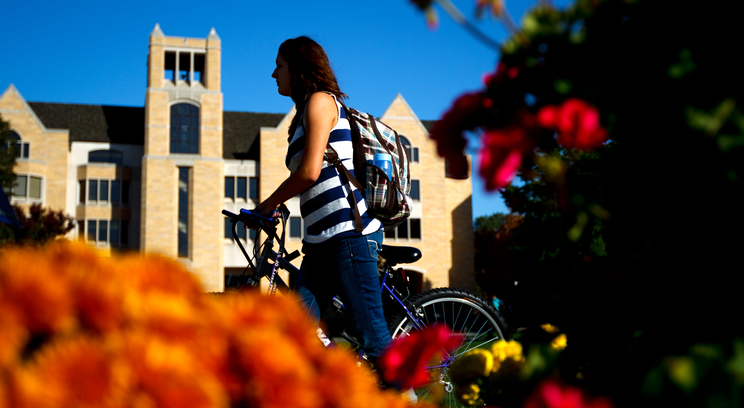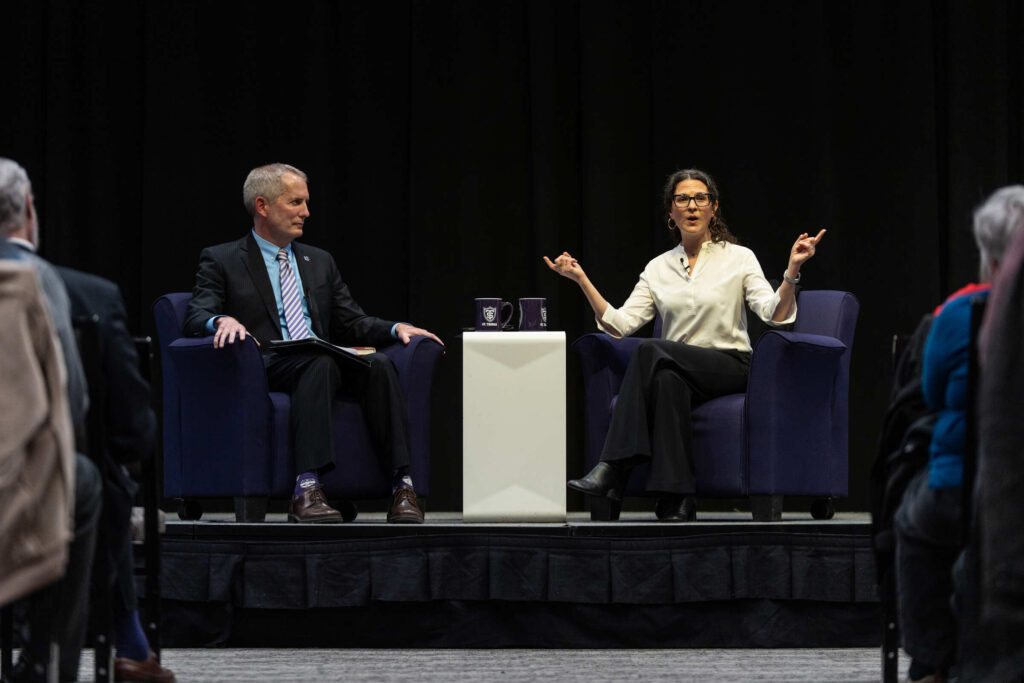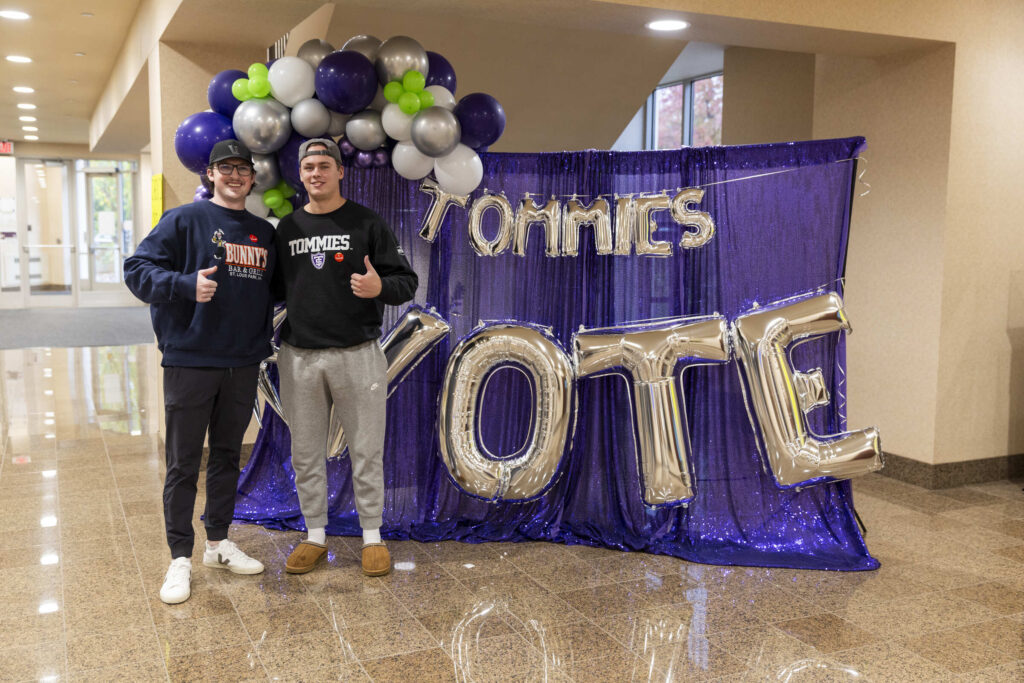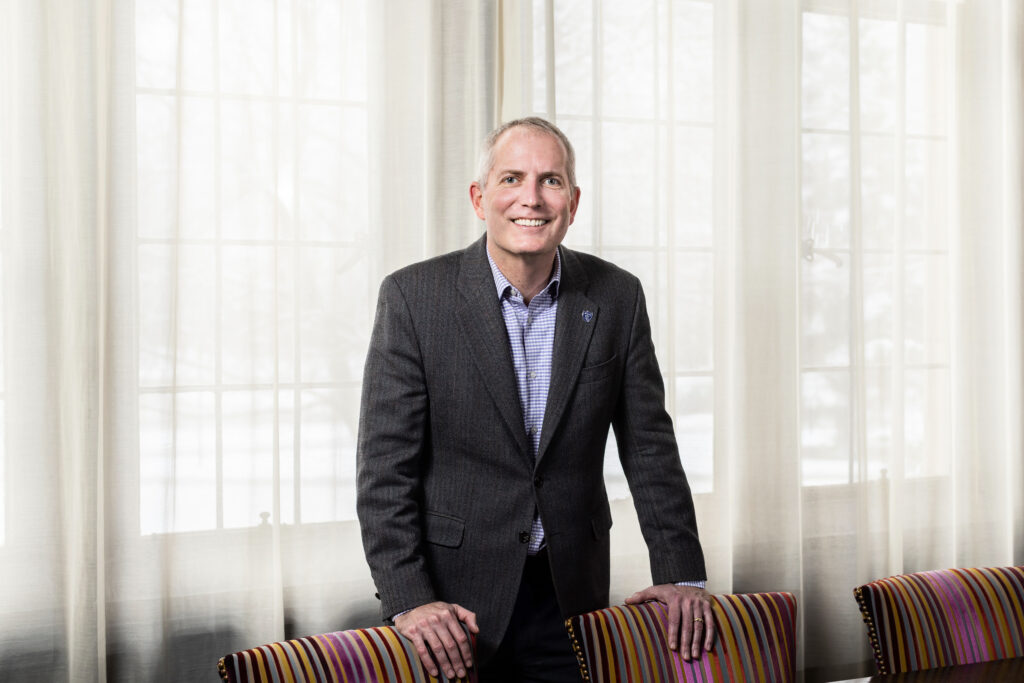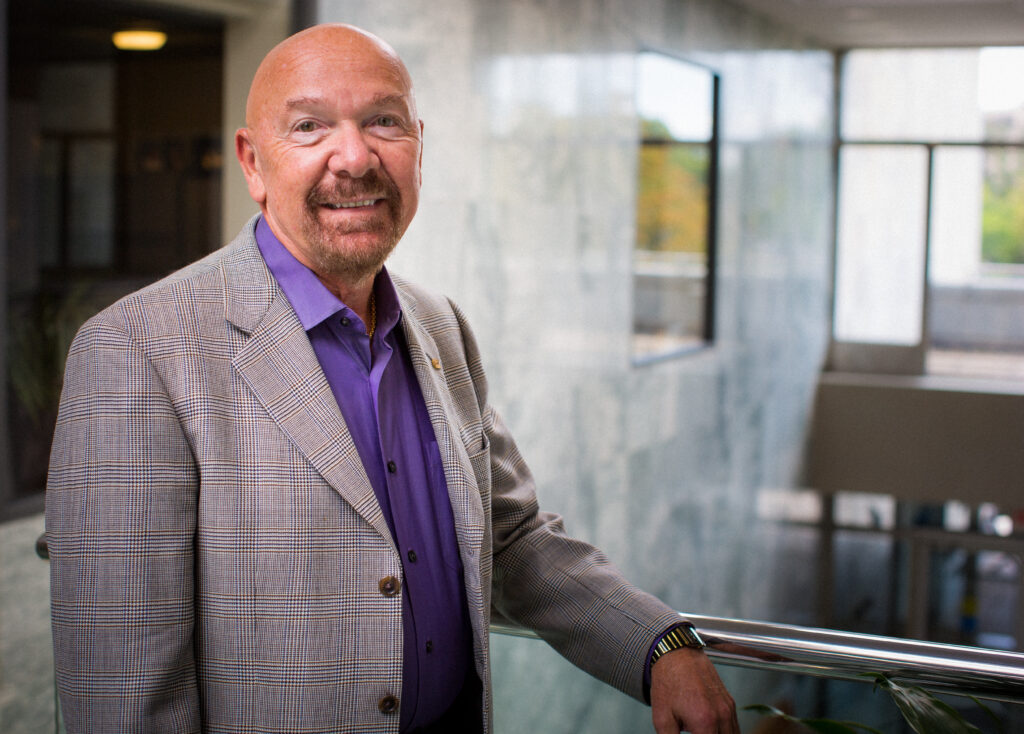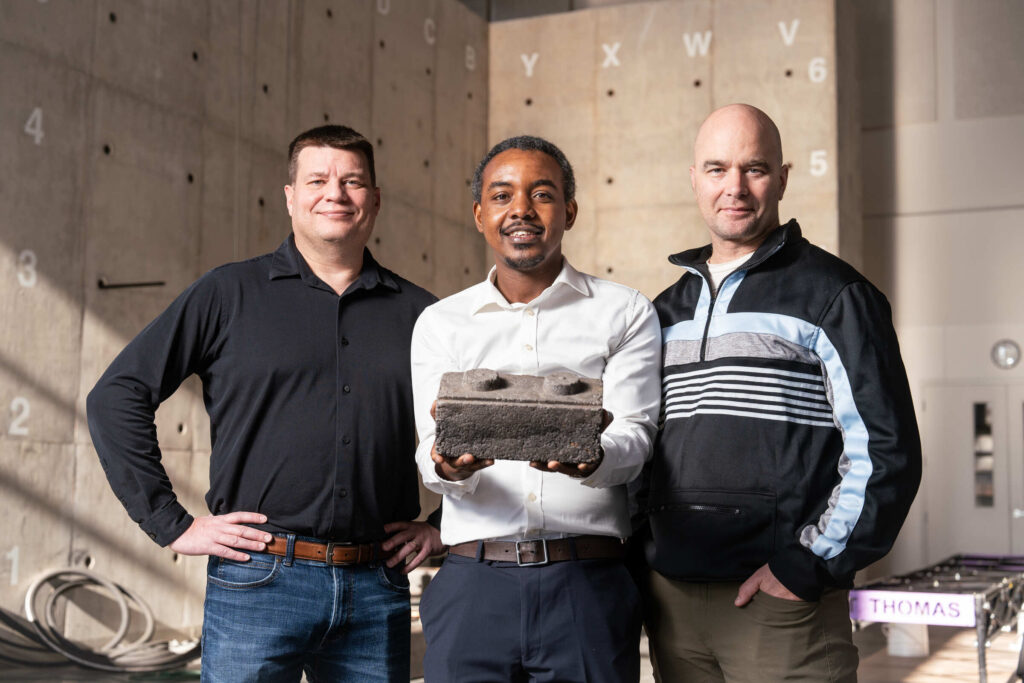Fall semester enrollment at the University of St. Thomas stands at 10,316 students, a decline of 2.1 percent over last year. Slight gains in undergraduate enrollment were offset by fewer students in most graduate programs.
A large freshman class of 1,447 contributed to an undergraduate enrollment of 6,336, an increase of 160 students or 2.5 percent. Graduate enrollment of 3,980 is a decrease of 387 students or 8.7 percent.
According to statistics compiled by the university’s Office of Institutional Effectiveness, the combined total of graduate and undergraduate credit hours, which represent the number of courses that students are taking, stands at 123,245, an increase of .09 percent.
A stagnant economy, employer cuts in tuition reimbursement and increased competition from new graduate programs in the region most likely contributed to declines in all but one of St. Thomas’ seven graduate colleges and schools at St. Thomas. Enrollment in the School of Social Work is up 7.1 percent.
Dr. Susan Huber, executive vice president and chief academic officer at St.Thomas, commented on the different set of factors that influence graduate and undergraduate enrollment.
“In this recession, a graduate degree is not a career necessity in the same way an undergraduate degree is,” she said. “You can always give up getting a graduate degree if you have to choose between paying for rent and paying for tuition. You know you can find another semester to return to school when the timing is right, and in this economy, the timing hasn’t been right for many people. That is one variable out of our control.”
Huber also attributes the enrollment decrease to the cost and structure of a St. Thomas graduate degree, in light of the recession: "Our competition provides similar types of degrees for less money and with a shorter time frame for degree completion. The fact that adults have so many activities to prioritize between work and home and children speaks to how time management factors into the choices of those seeking graduate degrees."
She added that while the recession can legitimately be blamed for a portion of the enrollment decline, the university cannot rest on its laurels: "We had a solid reputation for having the cutting edge in graduate programs, and we have lost that. Many of our graduate programs have been around for a decade; we need to determine if those programs are meeting the needs of students and employers and not focus solely on recruiting."
Huber would like to see St. Thomas "sharpen our entrepreneurial spirit with the future in mind and look at graduate programs in terms of career opportunities."
She noted a couple of programs are bridging content knowledge with work in the field to set themselves apart from the competition.
The School of Engineering, she said, has taken a first step with its M.S. in Electrical Engineering program, which began enrolling students this fall.
"This is the piece we need," she said, "because we're not the only M.S. degree in electrical engineering out there. What differentiates us from the University of Minnesota, for instance, is that our program has a specific twist. Dr. Don Weinkauf (engineering dean), has paid strict attention to combining liberal arts with engineering and then paying close attention to the application niche of what employers seek in the workplace." (Weinkauf added that the M.S. in Information Technology program was approved this month, and more information will be available later this fall.)
Huber also credited the School of Social Work which, in addition to its 7.1 percent increase in enrollment, saw a 9.4 percent increase in credit hours.
"Dr. Barbara Shank has done a great job working into her programming social justice principles that resonate with what social workers are talking about today" said Huber, who also applauded Shank's plans for an online certificate for social workers who work with military personnel.
Here are some other enrollment statistics released by the university’s Office of Institutional Effectiveness.
- Undergraduates are taking a 95,080 credit hours, a gain of 3,230 or 3.5 percent.
- Graduate students are taking 28,376 credit hours, down 2,126 or 7.5 percent.
- Undergraduates comprise 61 percent of all St. Thomas students but account for 70 percent of the credit hours.
- Nearly one out of four students is new to campus this fall and one in three is classified as part-time.
- The number of students living on the St. Paul campus this fall is 2,711, a record high, which is up 25 from 2,610 in 2011. The previous record was 2,686, set in 2009.
- More than twice as many St. Thomas students come from Hennepin County (2,829) as from the next closest county, Ramsey (1,321).
The percentage of students who are persons of color this fall stands at 14 percent, which is up 0.2 percent from last year. The percentage of students of color is: 14.4 for freshmen, up from last year’s 12; 14 for undergraduates; and 14.8 for graduate students.
These percentages would likely be higher if international students of color were included. St. Thomas does not use the race of students from other countries when calculating the overall percentage of its students of color. This fall St. Thomas welcomed 401 students (including 36 freshmen) from other countries, up 72 from last year and the highest since 2004.
At a time when some colleges and universities are enrolling more women than men, the St. Thomas male-female ratio continues to show a near even split. The percentage, 51 for men and 49 for women, has not changed much over the past decade. Among freshmen, men outnumber women this year 52.2 percent to 47.8 percent.
Other characteristics of the freshman class:
- They came from more high schools (426 compared to 391 last year) and states (29 compared to 24 last year);
- The average class rank of 75 is unchanged.
- The number who had perfect 4.0 high school grade-point averages increased from 145 last year to 182 this year
- The average high school G.P.A. of 3.56 is unchanged.
- The average ACT score of 25.6 is down marginally from last year’s 25.7.
- Of those reporting a religious affiliation, 53 percent indicated they are Roman Catholic. That compares to 48 percent last year and 53 percent in 2010.
Overall, 42 percent of St. Thomas students (both degree-seeking and non-degree-seeking) indicated they are Roman Catholic, which is the same as last year. This year 49 percent of undergraduates and 31 percent of graduate students indicated they are Roman Catholic.
Enrollment remained about the same at the undergraduate St. John Vianney Seminary and at the graduate-level St. Paul Seminary School of Divinity. St. John Vianney, which opened here in fall 1968, has 133 seminarians this fall, down two from last year. The School of Divinity welcomed 25 new seminarians this fall, bringing the number of men studying for the priesthood there to 104, up four from last year.
The number of undergraduates who transferred to St. Thomas this fall is 285, up 24 from last year.
Enrollment on the St. Paul campus is 7,566, up 218 from last year. St. Thomas is limited to 8,750 students in St. Paul under a Conditional Use Permit that was approved in 2004. The highest enrollment in St. Paul was 8,712 in 1991, the year before the university opened its Minneapolis campus.
Here’s the graduate-level enrollment and credit hours, and the percent change from last year, for St. Thomas’ colleges and schools:
| Program | Enrollment | % Change from 2011 | Credit hours | % Change from 2011 |
| College of Arts and Sciences | 147 | -8.7 | 572 | -18.1 |
| Opus College of Business | 1,202 | -9.6 | 7,297 | -6.9 |
| School of Divinity | 135 | -0.7 | 1,621 | +2.7 |
| College of Education, Leadership and Counseling | 1,098 | -15.8 | 5,864 | -16.2 |
| School of Engineering | 555 | -2.8 | 2,673 | -2.1 |
| School of Law | 452 | -7.9 | 6,466 | +3.4 |
| School of Social Work | 391 | +7.1 | 3,883 | +9.4 |
| Total | 3,980 | -8.7 | 28,376 | -7.0 |
To learn more about information available from Institutional Effectiveness’ Academic Reporting Center, go to this Newsroom article.
